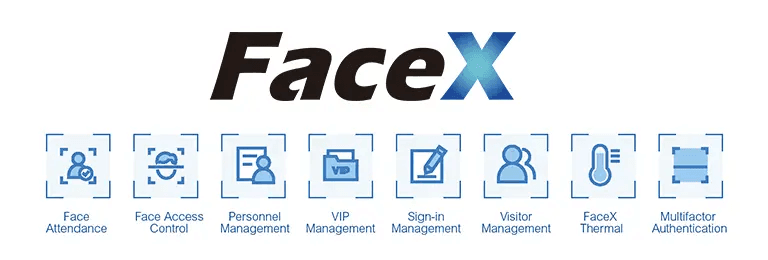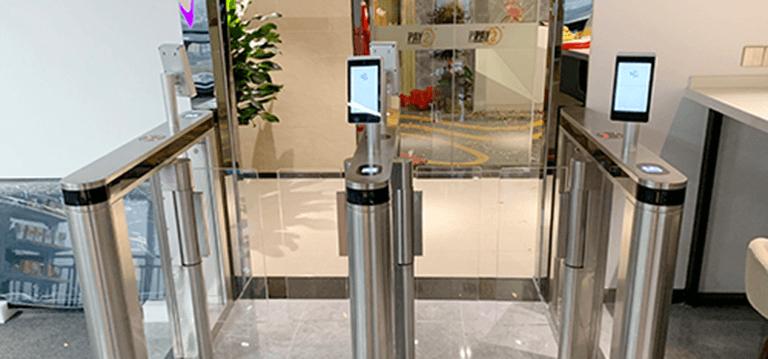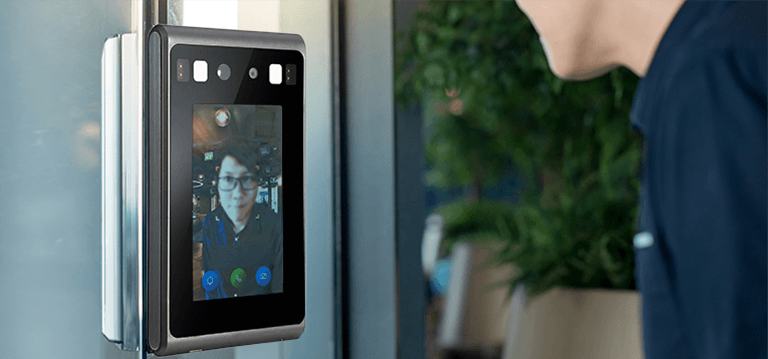

Face Recognition
Our face recognition system uses advanced algorithms to capture and identify faces quickly and accurately through cameras. It can be widely deployed in various settings such as public spaces, businesses, institutions, and residential settings. The system offers features like access control, real-time monitoring, and identity verification, significantly enhancing security measures.
Integrated's latest security solutions are equipped with cutting-edge facial recognition technology for precise identity verification.
Equipped with the latest professional-grade biometric technology, our ultra-accurate FaceX facial recognition and fingerprint security systems work seamlessly with our powerful state-of-the-art management security systems, including access control, attendance, mobile patrol, CCTVs, catering, electronic payment, building management, parking, crowd control, alarms, and green technology, to provide a genuinely comprehensive and cutting-edge security system capable of being tailored exactly to your organization's requirements.


What is Face Recognition?
Face recognition or facial recognition is a method of identifying or verifying the identity of an individual using their face. Face recognition systems can be used to identify individuals in photos, videos, or in real-time steamed media.
Face Recognition and Access Control
Face recognition can be considered to be a non-intrusive and relatively reliable access control or time attendance solution. Face recognition enables swift and contactless verification of user identity and arguably is less intrusive than fingerprint collection.
Integrated has over 10 years' experience in deploying facial recognition technology in Hong Kong. We are also one of the very few providers in Hong Kong with our own in-house R&D. Our FaceX face recognition technology can be combined with our smartcard, PIN code, QR code, fingerprint, turnstile and speedgate solutions.

FaceX facial recognition integrated with speed gates for main entries/exits.
Face Recognition and CCTV
With Integrated's cutting-edge face recognition solution, entry and exit points can be simultaneously monitored and secured with face recognition enabled CCTVs, thereby cutting down costs of expensive equipment. It also reduces the inefficiencies of maintaining multiple devices. The ability to scan multiple persons quickly and accurately also helps to reduce the manpower and costs associated with security monitoring and physical guards.

FaceX A.I. face recognition technology
VIP and Blacklists Control
One key benefit of face recognition is its ability to tailor rights and benefits to suit each individual non-intrusively. For example, a VIP customer system can help you provide instant targeted personalized benefits or promotions for your customers non-intrusively. Similarly, a security system can be set up with an invisible fence barring blacklisted individuals from certain areas or sites.
How Does Face Recognition Work?
Face recognition technology uses computer algorithms to pick out specific and distinctive details about a person's face. Specifically the technology analyzes an individual's facial features such as the spatial arrangement of their eyes, nose, lips, eye brows, shape of the chin and converts these calculations into a unique mathematic representation for each person. When a face is presented to a camera with face recognition enabled, the image captured is converted into mathematical data by the algorithm and compared to the underlying face template database.
For systems designed to track or trace individuals, e.g. missing child search, the system calculates a probability match score between the image of an unknown person and the specific face templates stored in the database. These systems will offer up several potential matches, ranked in order of likelihood of correct identification, instead of just returning a single result.

FaceX Thermal Practical Examples in Use
Points to Note About Face Recognition
Due to its growing popularity, myriads of face recognition algorithms and software have emerged over the last few years including the deployment of face recognition on smart tablets, mobile devices and CCTV. The accuracy of any face recognition algorithm or software depends heavily on the set of rules which govern its underlying algorithm and a different algorithm may perform better than others under certain situations.
For example, a lot of facial recognition software struggle with recognizing individuals from ethnic minorities or those with darker skin tones or younger children, often misidentifying or failing to identify them. Depending on the circumstances of deployment, inaccuracies could lead to grave errors or omissions, sometimes called false positives or false negatives, these are particularly important in the context of law enforcement where a misidentification could lead to the wrong individual being prosecuted.
Choosing the Right Face Recognition Technology
As face recognition technology becomes more ubiquitous in the future, the choices available on the market will also increase rapidly. It is important to choose the right type of algorithm or toolkit to suit your particular situation.
Ask yourself whether you are deploying the technology for: Corporate security? Retail? Law enforcement? Outdoors? Low light conditions? Suboptimal angle of view? The face recognition solution which suits your organization will depend heavily on your answer this question and we can help you find the right solution.
Main Features
Facial recognition capability can be installed with existing CCTV cameras, mobile devices or biometric readers
Real-time e-Map target route tracing
Intelligent data analytics and heat maps
Automatic tracing of moving or static faces with instant verification against central database
Simultaneous comparison of 106 facial elements resulting in an astonishingly low error rate of below 0.1%
Advanced artificial intelligence (AI) algorithm accurately analyses different facial attributes to distinguish between age, race, facial hair/beard, scaring, expression and so on
System can be set to flag high-risk groups based on facial attributes
Intelligent alarm system alerts security office of abnormal activities
Alarm is linked to video output for instant visual monitoring
Automatic car license plate and car model identification through smart integrated system
Precise tracking of blacklisted vehicles
Uses
To perfectly satisfy all application requirements of users with different functional combinations.



